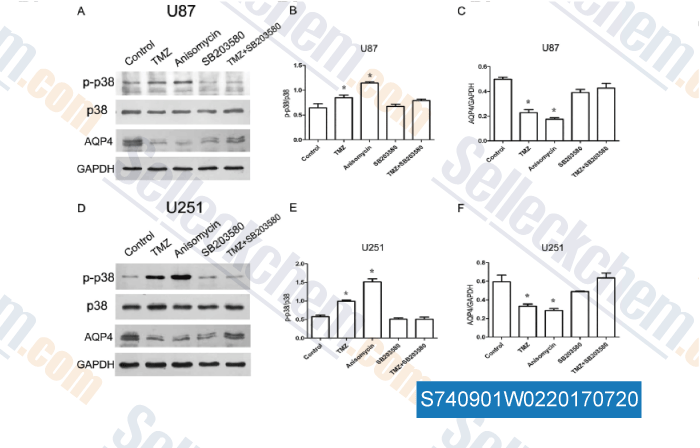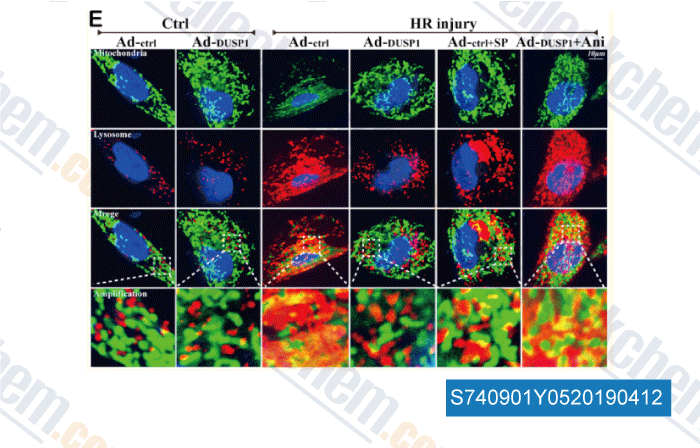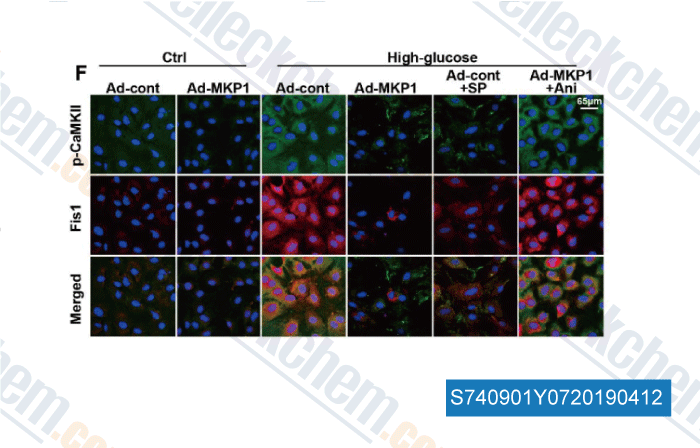|
Toll Free: (877) 796-6397 -- USA and Canada only -- |
Fax: +1-832-582-8590 Orders: +1-832-582-8158 |
Tech Support: +1-832-582-8158 Ext:3 Please provide your Order Number in the email. |
Technical Data
| Formula | C14H19NO4 |
||||||||||||||
| Molecular Weight | 265.3 | CAS No. | 22862-76-6 | ||||||||||||
| Solubility (25°C)* | In vitro | DMSO | 53 mg/mL (199.77 mM) | ||||||||||||
| Ethanol | 17 mg/mL (64.07 mM) | ||||||||||||||
| Water | Insoluble | ||||||||||||||
| In vivo (Add solvents to the product individually and in order) |
|
||||||||||||||
|
* <1 mg/ml means slightly soluble or insoluble. * Please note that Selleck tests the solubility of all compounds in-house, and the actual solubility may differ slightly from published values. This is normal and is due to slight batch-to-batch variations. * Room temperature shipping (Stability testing shows this product can be shipped without any cooling measures.) |
|||||||||||||||
Preparing Stock Solutions
Biological Activity
| Description | Anisomycin (Flagecidin, Wuningmeisu C) is a bacterial antibiotic isolated from Streptomyces griseolus, which inhibits protein synthesis, and also acts as a JNK activator. This compound upregulates autophagy and increases apoptosis. | |
|---|---|---|
| Targets |
|
|
| In vitro | Anisomycin (3 μM) decreases protein synthesis in MDA16 and MDA-MB-468 cells, and reduces colony formation by MDA-MB-468 cells. This compound causes an increase in the number of apoptotic cells in MDA-MB-468 cultures, but not in MDA16 cultures. It actives JNK phosphorylation in MDA-MB-468 cells.[2] In U251 and U87 cells, this chemical (0.01-8 μM) inhibits the cell growth in time- and concentration-dependent manners with the IC50 (48 h) values of 0.233 and 0.192 μmol/L, respectively. It (4 μM) causes 21.5% and 25.3% of apoptosis proportion in U251 and U87 cells, respectively, and activates p38 MAPK and JNK, while inactivated ERK1/2. This compound (4 μM) reduces the level of PP2A/C subunit in a time-dependent manner in U251 and U87 cells.[3] It inhibits EAC cell proliferation in concentration-dependent manner.[4] | |
| In vivo | Peritumoral administration of anisomycin (5 mg/kg) significantly suppresses Ehrlich ascites carcinoma (EAC) growth resulting in the survival of approximately 60% of the mice 90 days after EAC inoculation.[4] |
Protocol (from reference)
| Kinase Assay:[2] |
|
|---|---|
| Cell Assay:[4] |
|
| Animal Study:[4] |
|
References
|
Customer Product Validation

-
, , J Cell Biochem, 2017, 118(12):4905-4913

-
Data from [ , , Redox Biol, 2018, 14:59-71 ]

-
Data from [ , , Redox Biol, 2018, 14:576-587 ]

-
Data from [ , , Cell Physiol Biochem, 2018, 51(4):1778-1798 ]
Selleck's Anisomycin Has Been Cited by 87 Publications
| Dominant interfering CARD11 variants disrupt JNK signaling to promote GATA3 expression in T cells [ J Exp Med, 2025, 222(6)e20240272] | PubMed: 40111223 |
| Disrupting AGR2/IGF1 paracrine and reciprocal signaling for pancreatic cancer therapy [ Cell Rep Med, 2025, 6(2):101927] | PubMed: 39914384 |
| AMBP protects against aortic valve calcification by inhibiting ERK1/2 and JNK pathways mediated by FHL3 [ Theranostics, 2025, 15(10):4398-4415] | PubMed: 40225558 |
| Portimine A toxin causes skin inflammation through ZAKα-dependent NLRP1 inflammasome activation [ EMBO Mol Med, 2025, 10.1038/s44321-025-00197-4] | PubMed: 39948420 |
| UFMylation safeguards human hepatocyte differentiation and liver homeostasis by regulating ribosome dissociation [ Cell Rep, 2025, 44(5):115686] | PubMed: 40347470 |
| sFRP5 ameliorates atherosclerosis by suppressing the JNK/TLR9 pathway in macrophages [ Transl Res, 2025, 281:1-13] | PubMed: 40409587 |
| GRASPs link Reelin to the Golgi during neocortical development to control neuronal migration and dendritogenesis [ Commun Biol, 2025, 8(1):572] | PubMed: 40188221 |
| PRDX1 knockdown promotes erastin-induced ferroptosis and impedes diffuse large B-cell lymphoma development by inhibiting the MAPK/ERK pathway [ BMC Cancer, 2025, 25(1):806] | PubMed: 40307771 |
| Promoter Methylation of WIF1 is Involved in IL-17-Induced Chondrocyte Inflammatory Injury and Matrix Degradation via Promoting Wnt5a/MAPK-JNK Signaling [ Mol Biotechnol, 2025, none] | PubMed: 40072748 |
| Transcriptional landscape and predictive potential of long noncoding RNAs in peritoneal recurrence of gastric cancer [ Mol Cancer, 2024, 23(1):284] | PubMed: 39736670 |
RETURN POLICY
Selleck Chemical’s Unconditional Return Policy ensures a smooth online shopping experience for our customers. If you are in any way unsatisfied with your purchase, you may return any item(s) within 7 days of receiving it. In the event of product quality issues, either protocol related or product related problems, you may return any item(s) within 365 days from the original purchase date. Please follow the instructions below when returning products.
SHIPPING AND STORAGE
Selleck products are transported at room temperature. If you receive the product at room temperature, please rest assured, the Selleck Quality Inspection Department has conducted experiments to verify that the normal temperature placement of one month will not affect the biological activity of powder products. After collecting, please store the product according to the requirements described in the datasheet. Most Selleck products are stable under the recommended conditions.
NOT FOR HUMAN, VETERINARY DIAGNOSTIC OR THERAPEUTIC USE.
